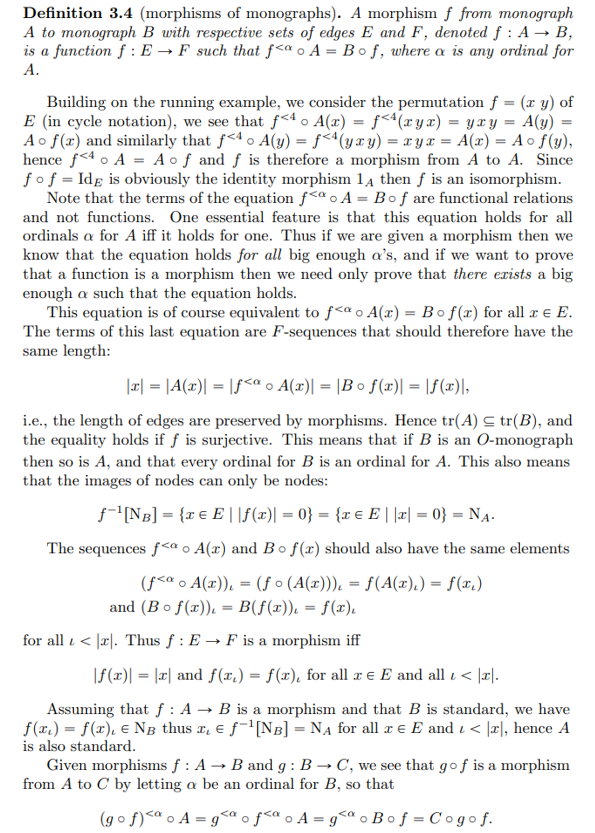and the distribution of digital products.
How Monographs Unify Graph Structures
:::info Author:
(1) Thierry Boy de la Tour, Univ. Grenoble Alpes, CNRS, Grenoble INP, LIG 38000 Grenoble, France.
:::
Table of Links2 Basic Definitions and Notations
2.3 Signatures and Algebras and 2.4 Categories
3 Monographs and their Morphisms
6 Graph Structures and Typed Monographs
7 Submonographs and Partial Morphisms
8 Algebraic Transformations of Monographs
3 Monographs and their Morphisms
\ It is easy to see that for any set of monographs there exists a common ordinal for all its members.
\

\ Since any ordinal is a set of ordinals, we see that an ordinal α is for a monograph iff this is an α-monograph. Hence all edges of a monograph have finite length iff it is an ω-monograph.
\

\ The running example A has no nodes and is therefore not standard. Since Apxq “ x y x then x is adjacent to y and to itself. Similarly, Apyq “ y x y yields that y is adjacent to x and to itself. In this case the adjacency relation is symmetric, but this is not generally the case, e.g., a node is never adjacent to any edge, while edges may be adjacent to nodes.
\

\ Definition 3.5 (categories of monographs, functor E). Let Monogr be the category of monographs and their morphisms. Let SMonogr *be its full subcategory of standard monographs. For any set O of ordinals, let O-*Monogr (resp. O-SMonogr) be the full subcategory of O-monographs (resp. standard O-monographs). Let FMonogr be the full subcategory of finite ω-monographs.
\ Let E be the forgetful functor from Monogr to Sets*, i.e., for every monograph A let EA be the set of edges of A, and for every morphism f : A → B let Ef : EA → EB be the underlying function, usually denoted f.*
\ There is an obvious similitude between standard t0, 2u-monographs and graphs. It is actually easy to define a functor M : Graphs Ñ t0, 2u-SMonogr by mapping any graph G “ pN, E, s, tq to the monograph MG whose set of edges is the coproduct N `E, and that maps every edge e P E to the sequence of nodes speqtpeq (and of course every node x P N to ε). Similarly graph morphisms are transformed into morphisms of monographs through a coproduct of functions. It is easy to see that M is an equivalence of categories.
\ It is customary in Algebraic Graph Transformation to call typed graphs the objects of GraphszG, where G is a graph called type graph, see e.g. [2]. We will extend this terminology to monographs and refer to the objects of MonogrzT as the monographs typed by T and T as a type monograph.
\
:::info This paper is available on arxiv under CC BY 4.0 DEED license.
:::
\
- Home
- About Us
- Write For Us / Submit Content
- Advertising And Affiliates
- Feeds And Syndication
- Contact Us
- Login
- Privacy
All Rights Reserved. Copyright 2025, Central Coast Communications, Inc.